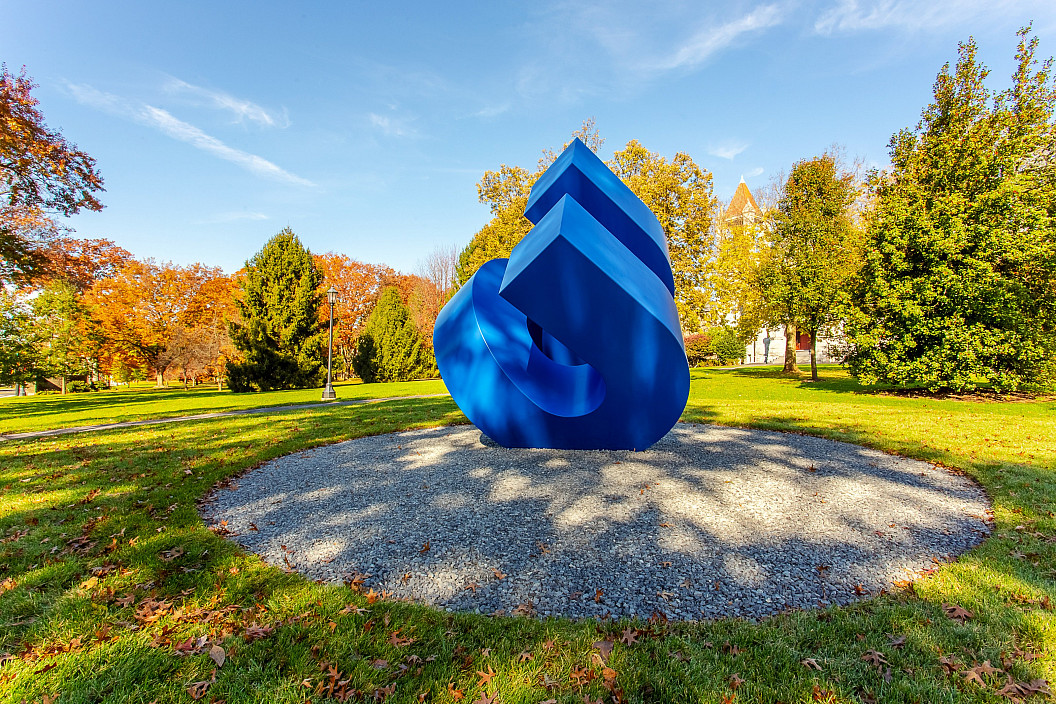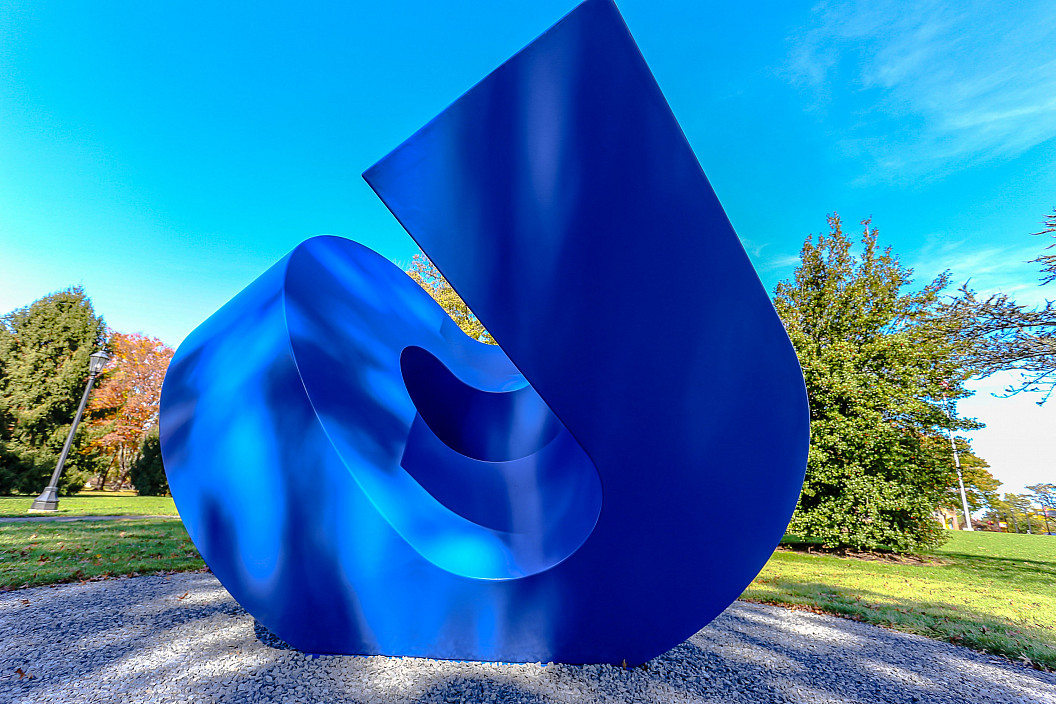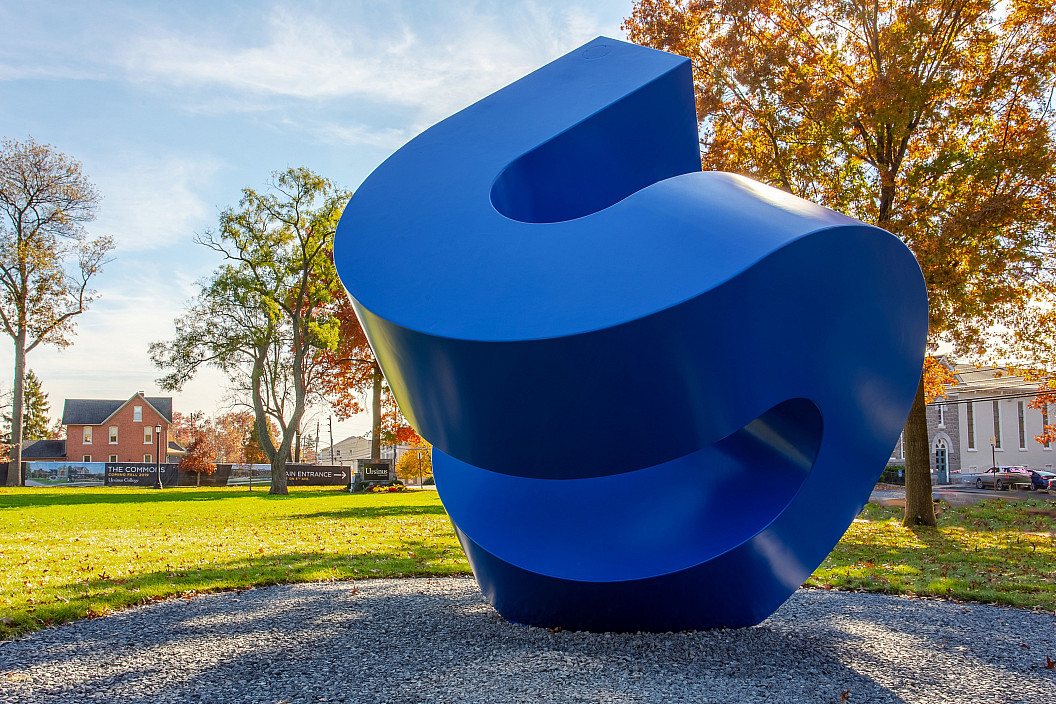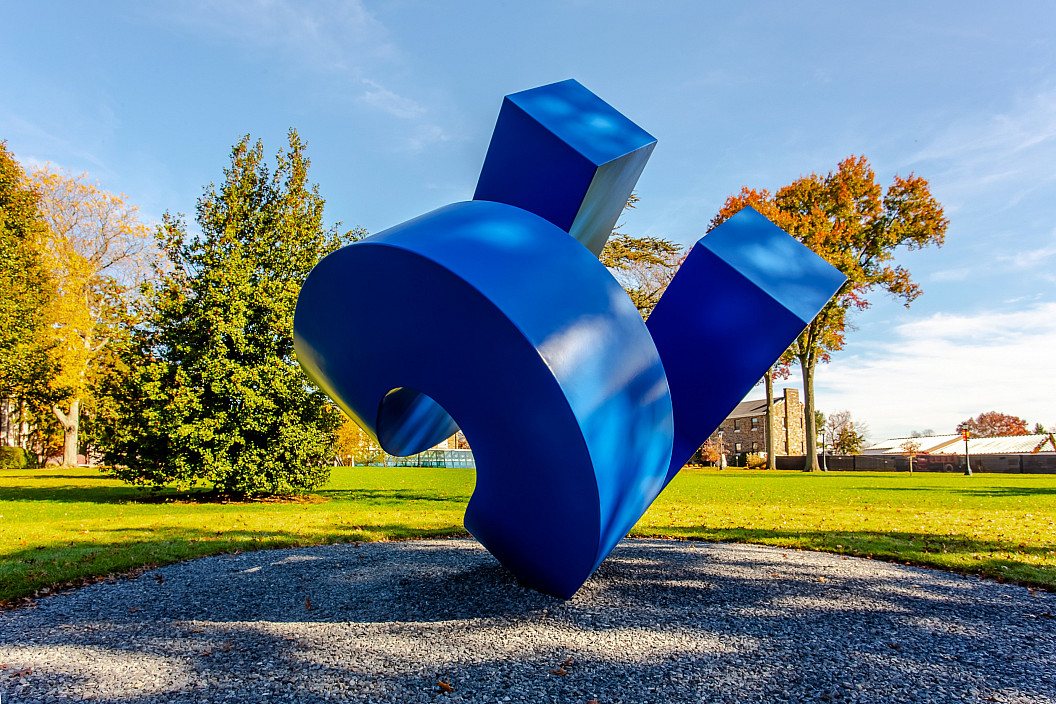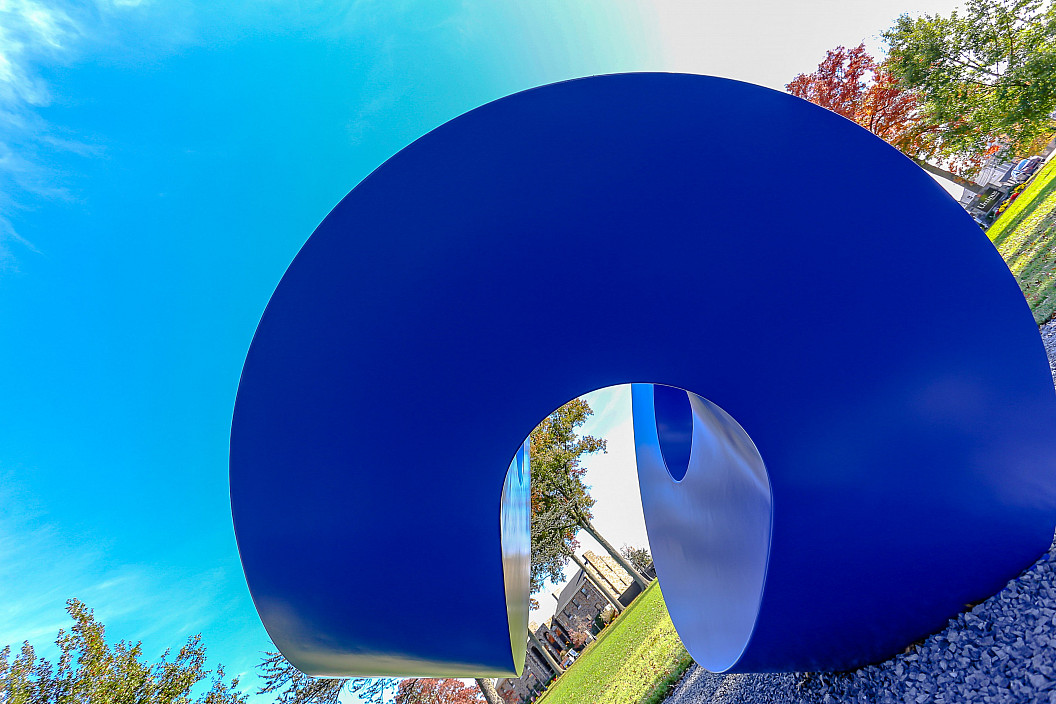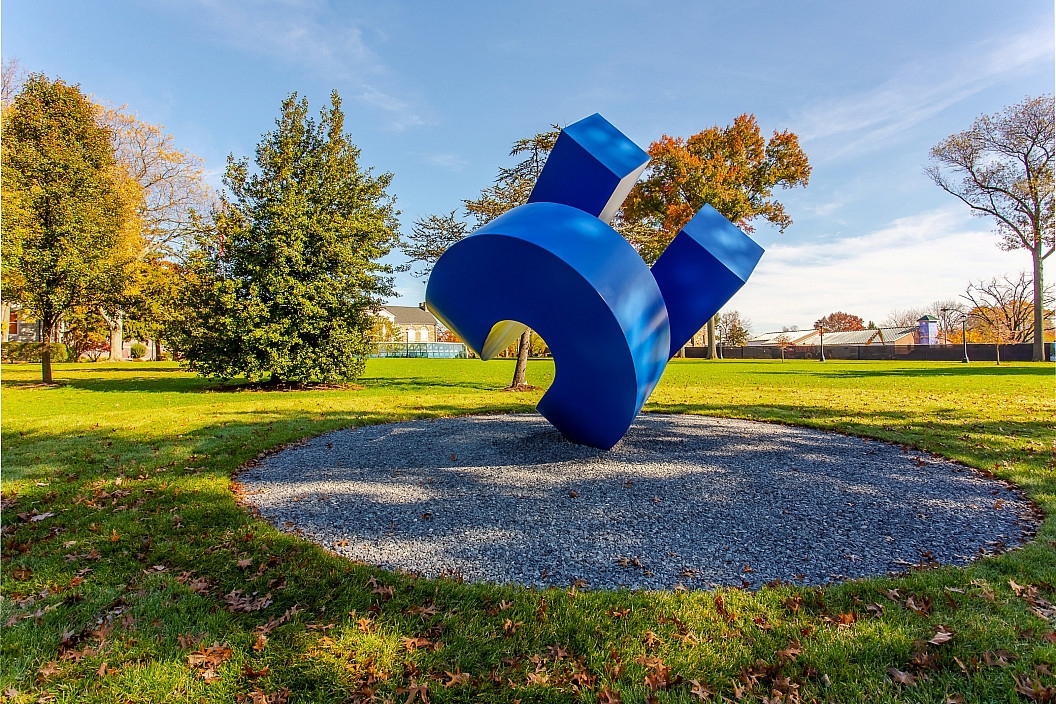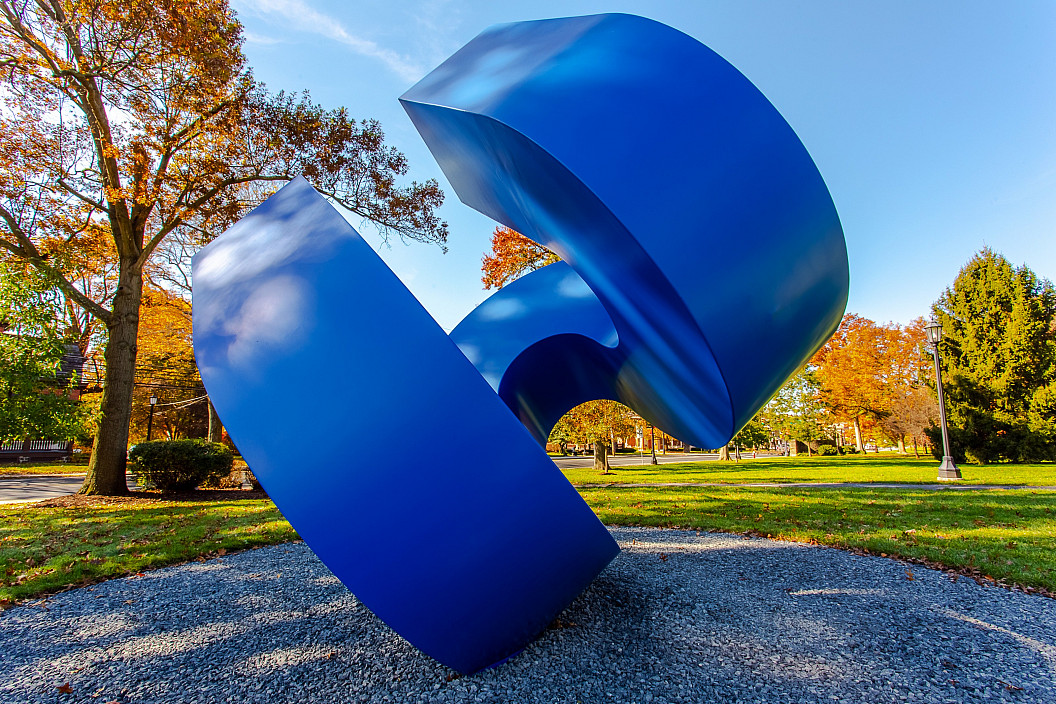Cubed Curve
William Crovello American, b. 1929
Cubed Curve, 1972 Stainless steel Permanent Collection, Philip and Muriel Berman Museum of Art Gift of the Rockefeller Group
The Cubed Curve, created in 1972 by American sculptor William Crovello, is an iconic sculpture that was once a familiar sight to millions in mid-town Manhattan.
The large sculpture was a landmark in Manhattan having adorned the plaza of the Time-Life Building on the Avenue of Americas and 50th Street for more than 40 years.
Bright blue in color and geometric in shape, the 3,500-pound sculpture consists of formed, bent and welded stainless steel plate that measures 144 inches high by 84 inches long.
Best known for his sculpture works, Crovello initially studied painting at the Rhode Island School of Design. In the 1950s, Crovello spent four years in Japan, where he gained a love and appreciation for the art of calligraphy. After returning to New York in 1961 and later moving to Spain in 1968, he transitioned from painting to sculpture. Inspired by his time in Japan, the Cubed Curve reflects the fluid movement of the calligraphic stroke.
About William Crovello
(Excerpted from The Abstract Impulse)
Best known for his large public sculpture. New York City native William Crovello initially studied painting at the Rhode Island School of Design from 1947 to 1951. He entered the air force in 1952 and was stationed in Japan from 1954 to 1955. Following his military duty, Crovello, seeking his expressive muse, returned to Japan in 1957 for four years and became enchanted with the rich tradition of classical calligraphy. The artist absorbed both the deep philosophy and technical execution of the ancient script by immersing himself in calligraphic study.
After returning to New York in 1961, the artist moved to Spain in 1968 and shifted from painting to sculpture, creating forms whose presence activated three-dimensional space. His stone and metal works draw directly from the smooth strokes of the Japanese brush, echoing the graceful brevity and elegant fluidity of an ancient tradition. Following the movement of the calligraphic stroke, Crovello created numerous public sculptures, such as the painted steel Cubed Curve installed in 1972 outside of the Time-Life Building in New York City, and the Swedish granite Katana (1980) in the Donald M. Kendall Sculpture Gardens at PepsiCo, Purchase, New York.
Price, Marshall N., and Monica Steinberg. The Abstract Impulse: Fifty Years of Abstraction at the National Academy, 1956-2006. Hudson Hills, 2007.
History of the Rockefeller Group
For nearly nine decades, Rockefeller Group has initiated some of the most memorable endeavors in American commercial real estate. Their proud tradition of real estate excellence began with the vision and development of the world’s finest urban business and entertainment complex – Rockefeller Center.
The company marked its 80th anniversary on December 6, 2008. It was incorporated December 6, 1928, as the Metropolitan Square Corporation. After building the original 6 million-square-foot, Art Deco complex throughout the 1930s and into the ’40s, Rockefeller Group developed several towers in the ’50s and ’60s. By the early ’70s, the company had added four International Style towers to Rockefeller Center on the west side of Avenue of the Americas, more than doubling the size of the original center.
Beginning in the mid-1970s, Rockefeller Group applied its distinctive brand of quality to develop signature office complexes across the country, and the company began acquisitions and formations of new business lines complementary to its office development and management core.
Read more:
Iconic New York City Sculpture Has New Home in Collegeville
Iconic Manhattan sculpture finds a new home in Collegeville, Pa.


